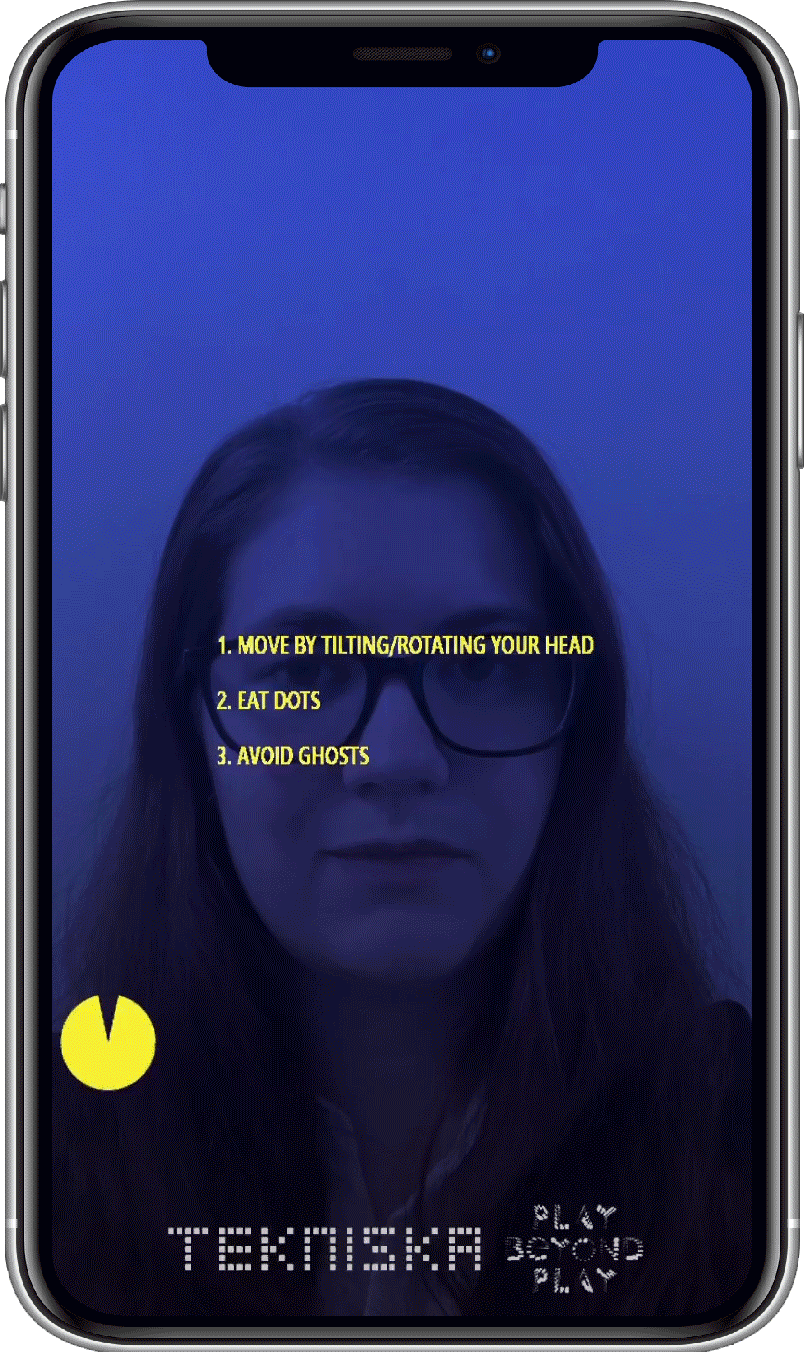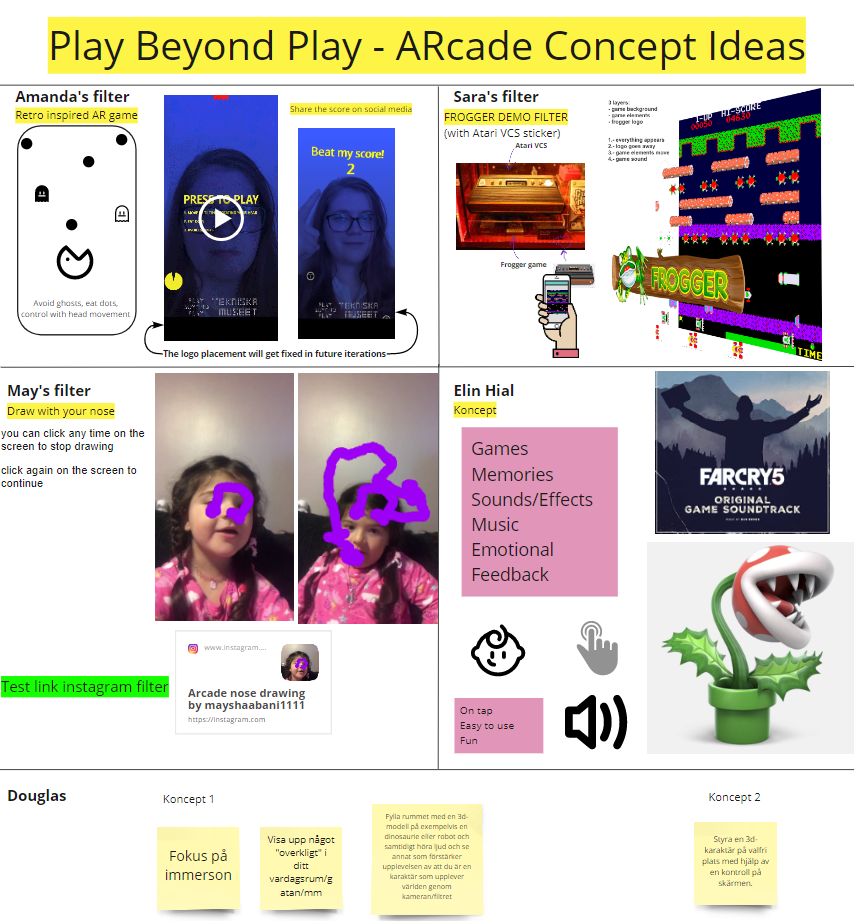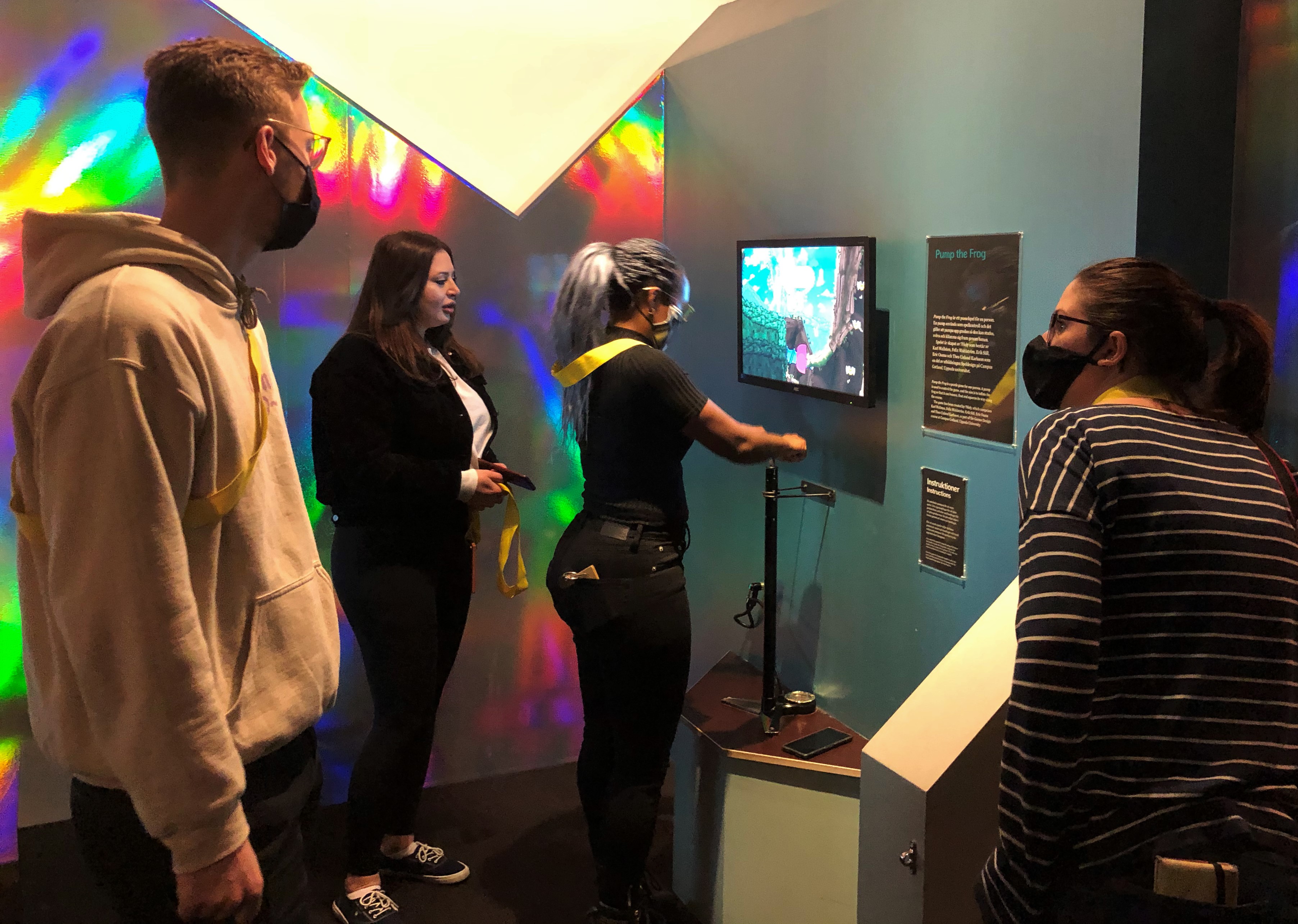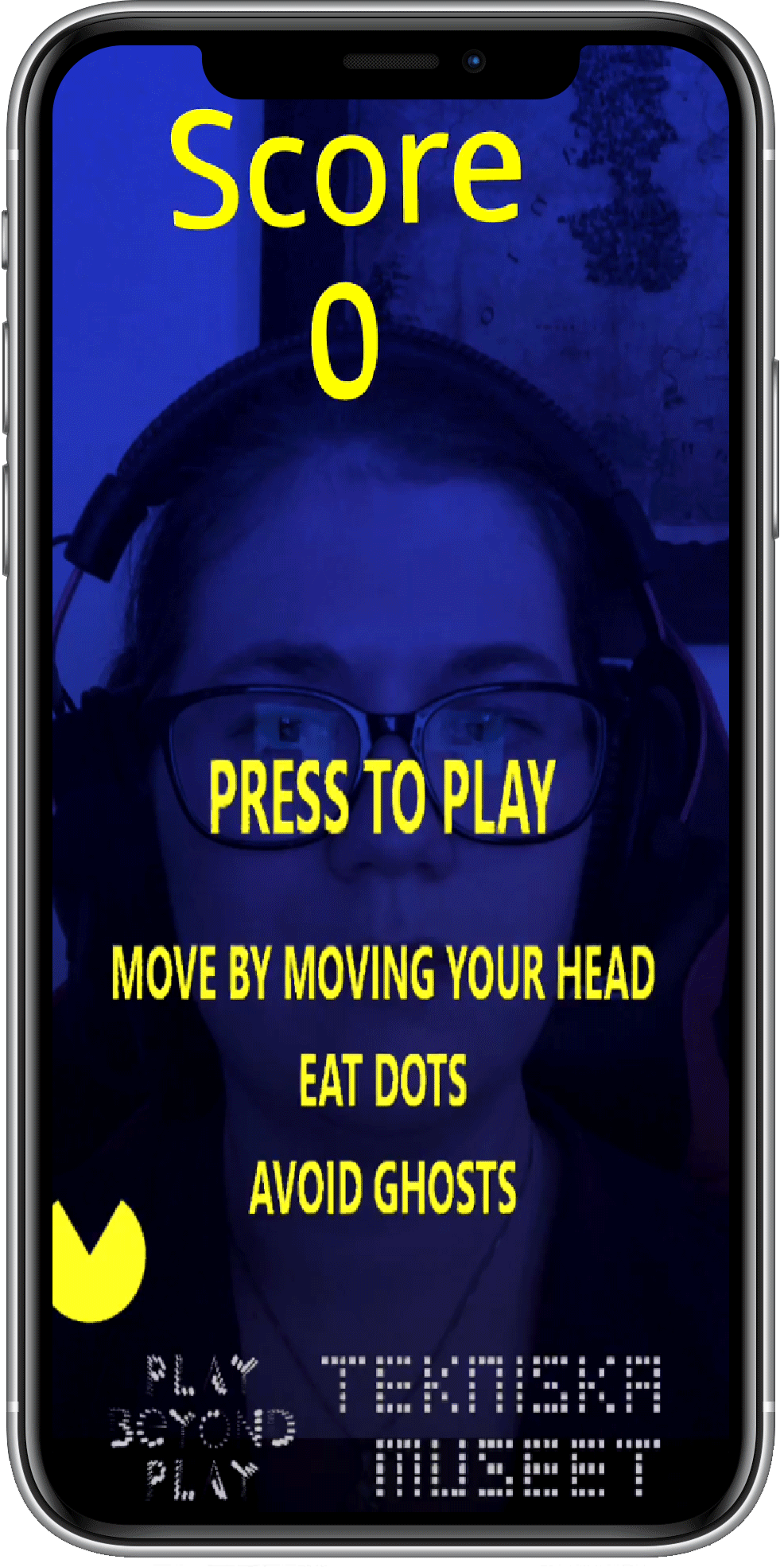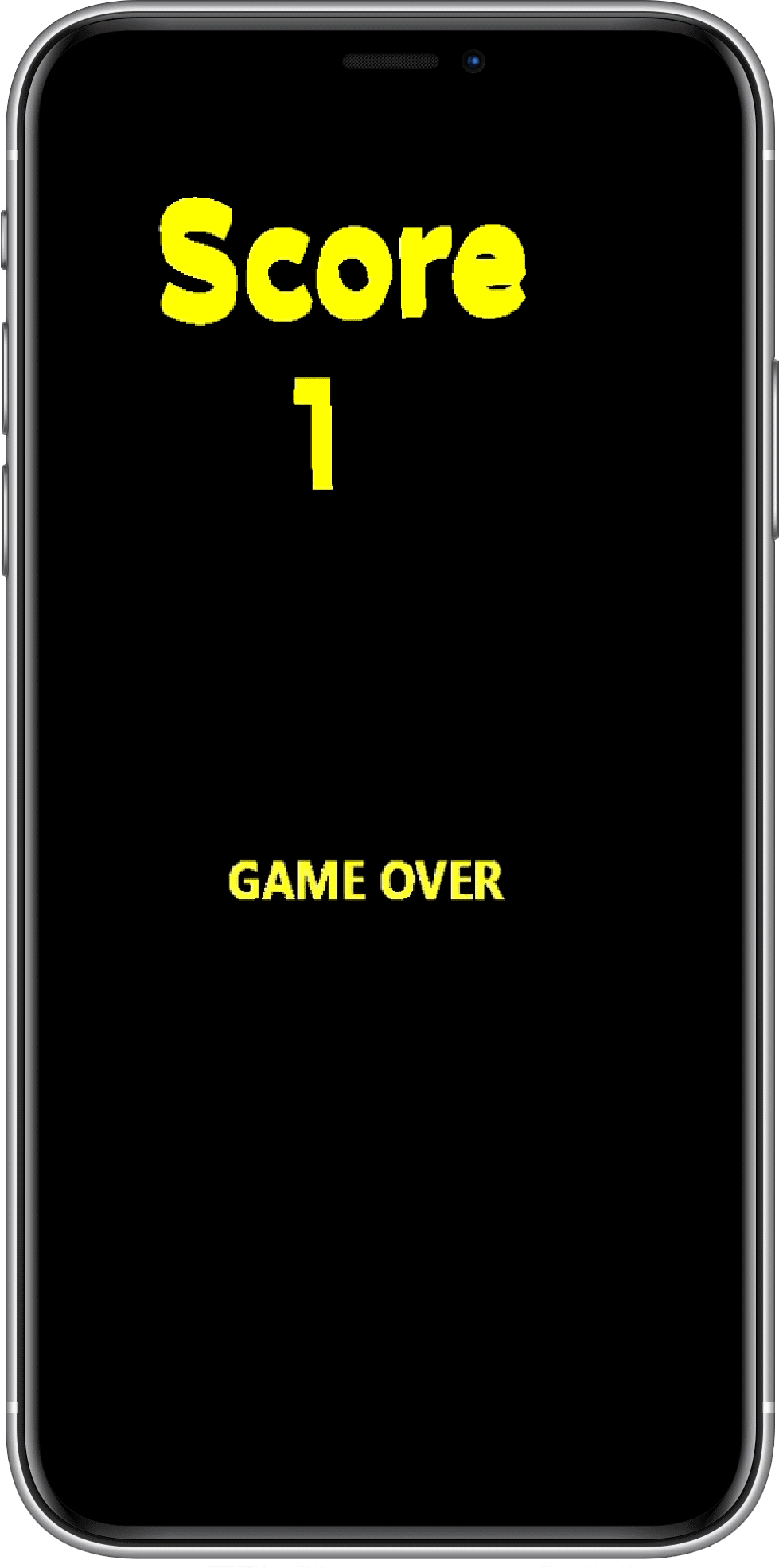1. DEFINING THE PROBLEM
I contacted Tekniska Museet and they were interested in collaborating with us. We had a meeting where we defined the goals, and asked about the habits of their visitors and their target group.
The Brief
Create an Augmented Reality guide to a place/person/institution.
Each team member was responsible for one concept & filter, but we had the same theme. I suggested the exhibition Play Beyond Play which is what we went with.
Target Group
Families with children (aged ~2-12).
Combining retro games with new tech. To validate my concept, I pitched the game to other groups, the target audience, and my teacher.
2. RESEARCH
I used both information from the client, and researched on my own by interviewing the target group.
I interviewed different groups that visited the exhibition. I noticed that the target audience seemed to be families with children, which was later confirmed by the client. We also saw that many AR and VR games were closed off due to Covid.
I asked the visitors about their habits concerning gaming and museum visits, and their thoughts about filters. All of the visitors mentioned that AR and VR were very interesting and that they find those kinds of games engaging.
The target audience loves interactive experiences, so the filter must be hands-on.
3. DEVELOPMENT & TESTING
I developed the game in several iterations and tested it with both adults and kids.
The kids were very engaged with the game. They said it was fun, wanted to know other people's scores, and jumped up and down and laughed.
The adults enjoyed sharing the score and competing on social media.
Creating the basic game in Spark AR. I created the characters in Photoshop Illustrator, non-pixeled so that the kids will relate to the characters more easily, while still giving a retro feeling for the adults. I created the sound in an 8-bit sound generator, enhancing the retro feeling.
Test 1 Problems: The user didn't understand how to move the character. The game wasn't that fun to share on social media.
Solutions: Add instructions at the start of the game. Add a transparent game over scene for selfies.
I incorporated the feedback from the tests, and further developed the game logic and cleaning up the scene, like hiding the dots when they get eaten.
Test 2 Problems: The user didn't understand the wording "move" and tried to tilt their head or move the head to move the character. The game was a bit overwhelming with impressions.
Solutions: Change the wording in the instructions, and add the possibility to tilt or rotate the head. Only show elements relevant for that scene of the game, and hide the rest.
To lower the cognitive load, I hid elements that weren't necessary at that time of the game. This meant showing/hiding the ghosts & the character, and switching out the "score" text to an encouraging "beat my score" text at game over for selfies.
I also added both rotate head and tilt head controls, and reset the scene when restarting the game.
Test 3 Problems: Immediately after the start of the game, it's hard to catch the dots due to the position & speed. Moving the character like they wanted it to move was also a bit hard.
Solutions: Fix dot & ghost position & speed, and the character speed.
I created a 3D model of the character in Cinema4D, but after user testing and feedback, I decided not the integrate the 3D character into the filter. A common comment was that it removed the nostalgic feeling.
Instead, I concentrated on fine-tuning the speed and position of the game objects.
Test 4 Problems: The kids wanted to know the name of the game.
Solutions: Create a logo with a name.
I created a game logo and added the logo for Tekniska Museet and its exhibition Play Beyond Play. To not confuse the player, I only show the logos at the beginning and end of the game.
